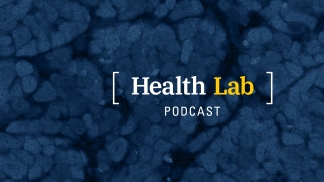Transgender people more likely to be admitted when seeking emergency care
Researchers find higher hospital admission rates among nonbinary people, with a high proportion experiencing a chronic condition or mental illness.
Transcript
Host:
Welcome to Health Lab, your destination for news and stories about the future of healthcare. Today: Transgender people more likely to be admitted when seeking emergency care.
Researchers find higher hospital admission rates among nonbinary people, with a high proportion experiencing a chronic condition or mental illness.
Transgender and nonbinary people are significantly more likely than cisgender peers to be admitted following a visit to the emergency department, a study suggests.
Michigan Medicine researchers found a rapid increase in the proportion of visits with a trans-related diagnosis, from 0.001% of visits in 2006 to 0.016% in 2018, according to the findings presented at ENDO 2023 in Chicago, the Endocrine Society’s annual meeting.
“Transgender people face significant health disparities, including access to primary and preventive care,” said lead author Daphna Stroumsa, M.D., M.P.H., an assistant professor in obstetrics and gynecology at the University of Michigan Medical School and an obstetrician-gynecologist at Michigan Medicine.
“These barriers – often driven by structural and interpersonal stigma – block trans people from accessing primary care and could lead to heavier reliance on emergency care.”
A large proportion of emergency care visits by trans individuals was associated with a chronic condition (58% compared to 19%) or a mental health diagnosis (29%, compared with 4% for cisgender patients.)
Similarly, hospital admission among trans people was much more likely to be linked to a mental health condition (37% versus 5%.)
“The high admission rates, and high proportion of trans people with a chronic condition or with a mental health condition, may represent worse overall health due lack of primary care, or a delay in seeking emergency care,” Stroumsa said. “There is a need for increasing access to affirming primary and mental health care for transgender people.”
Stroumsa notes that findings may also reflect a higher likelihood of a trans-related diagnostic code being charted among trans people being admitted.
Researchers analyzed data from the Nationwide Emergency Department Sample, a sample of hospital-based emergency visits and used gender-dysphoria related diagnostic codes to compare visits between demographic groups.
For more on this story and others like it, michiganmedicine.org/health-lab. Health Lab is a part of the Michigan Medicine Podcast Network, and is produced by the Michigan Medicine Department of Communication. You can subscribe to Health Lab wherever you listen to podcasts.

Listen to more Health Lab podcasts - a part of the Michigan Medicine Podcast Network.





